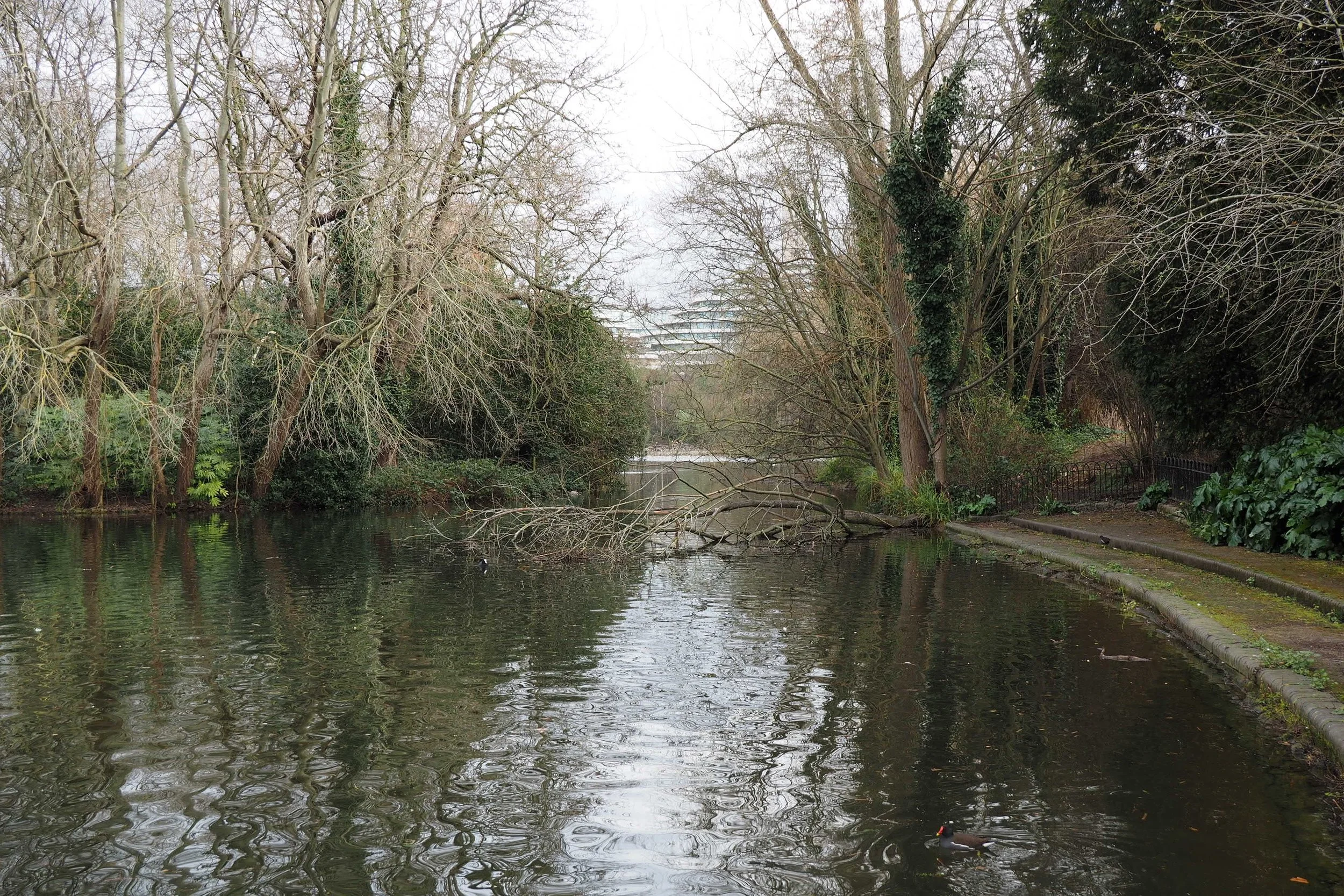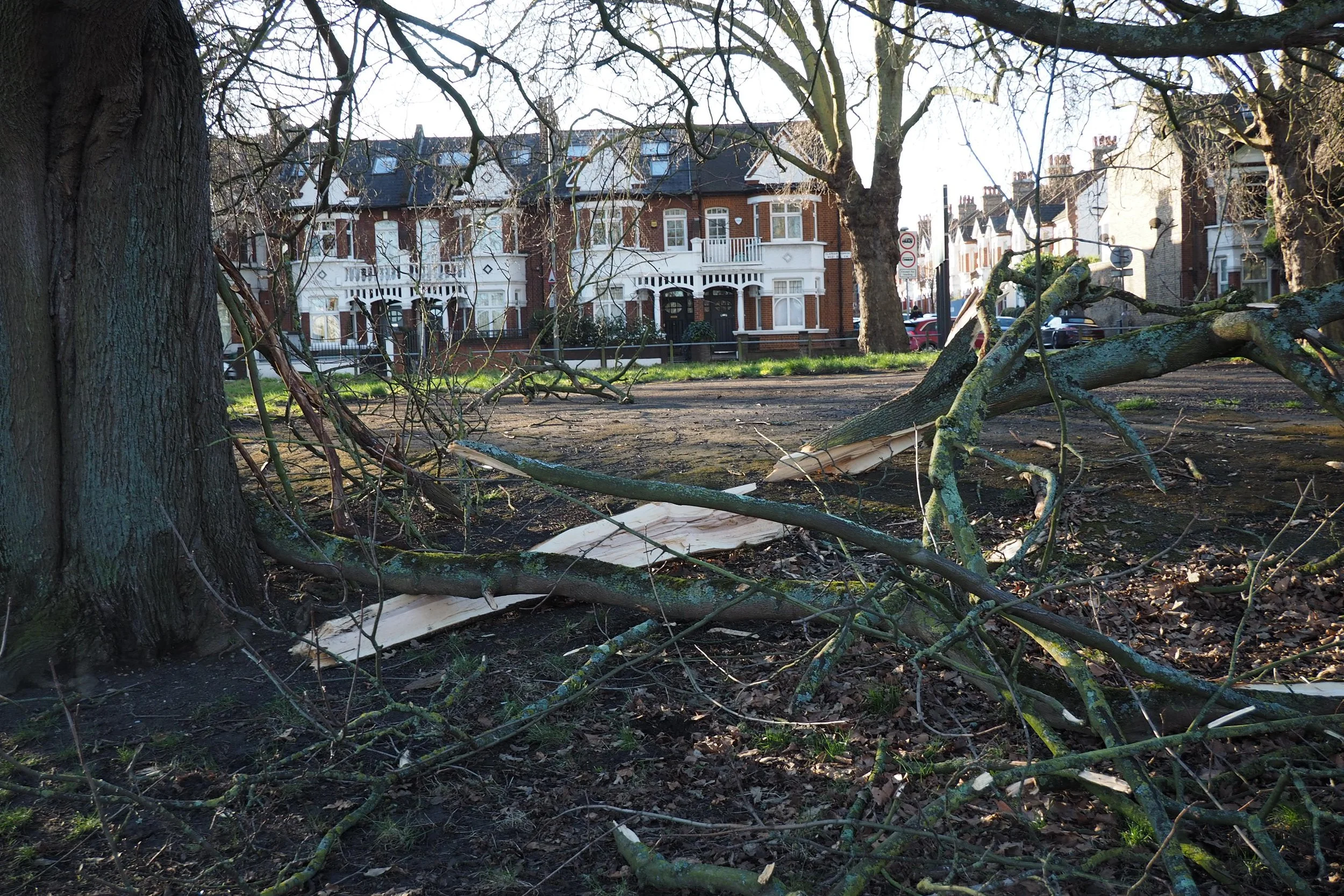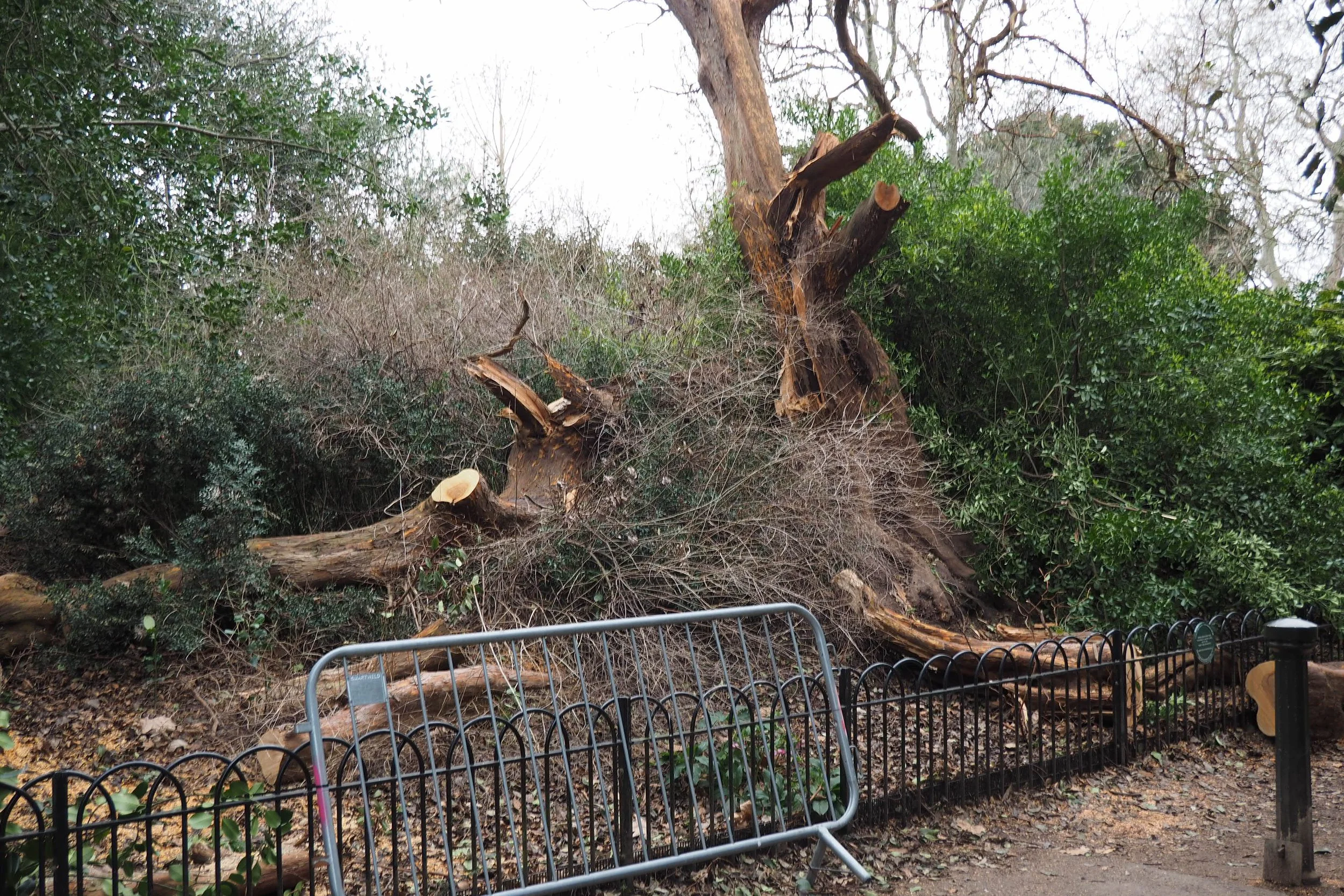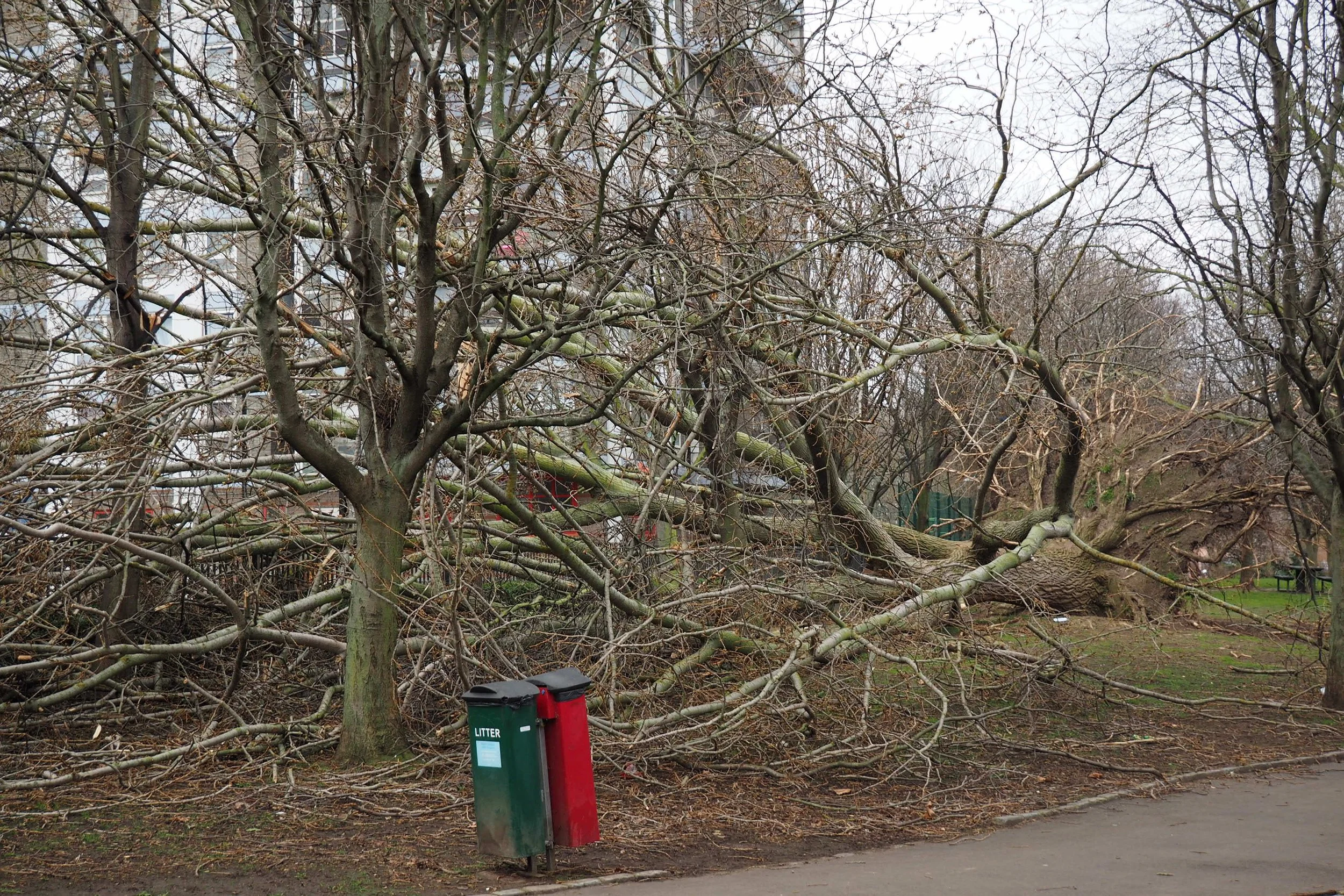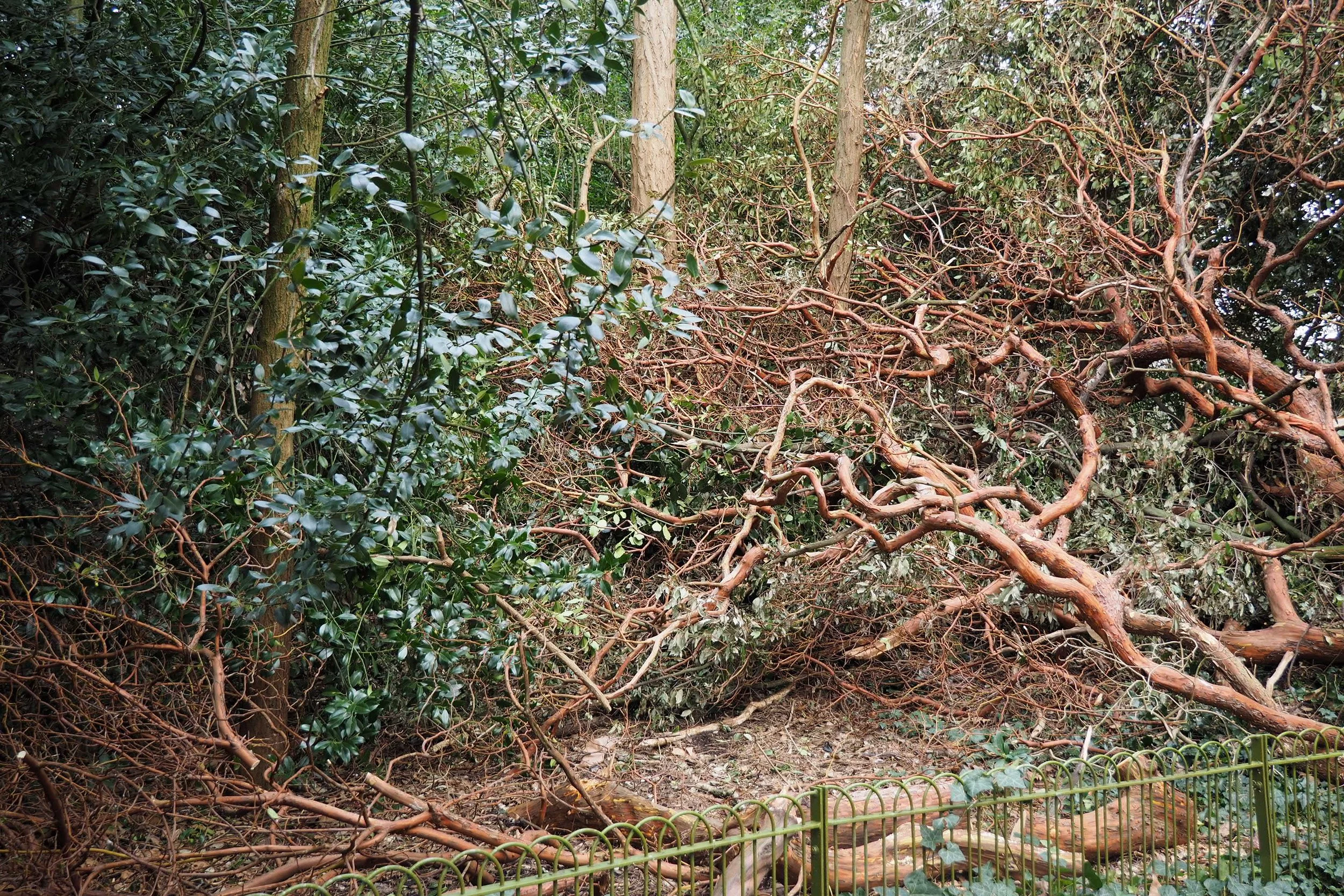Storm Eunice and Battersea
By Clare Graham, Chair, Open Spaces Committee
I've already written up the impact of Storm Eunice on Battersea's trees for Battersea Matters, due out in April, but thought I'd share here a few more of my own photos of the damage, together with some extra details which arrived too late to be included in my article.
This tree toppled into the lake in Battersea Park
Tree losses
The extra facts and figures come courtesy of Briennah Mollison-Read, the Community Engagement Officer for Enable Leisure and Culture, the body which manages our open spaces and street trees on behalf of Wandsworth Council. Storm Eunice passed over London on the morning of Friday 18 February; while the weather had calmed somewhat by the end of the day, winds remained high over the weekend, keeping Enable's tree team busy dealing with call-outs. 167 trees in the public realm over the borough as a whole ended up requiring remedial work, of which around 70 were lost altogether. 23 of those were in Battersea; that figure doesn't include losses on our side of Clapham Common, since that's looked after in its entirety by Lambeth Council, despite around half of its area falling geographically within the old parish and borough of Battersea, which is of course now part of Wandsworth. There was damage there both within Battersea Wood and on the detached western portion of the Common, while on Wandsworth Common the Friends are mourning the loss of two fine large black poplar trees near Dorlcote Road.
Fallen branches on Clapham Common
Battersea Park and the Strawberry Tree
Four trees fell in Battersea Park, the saddest casualty being the big hybrid strawberry tree (arbutus x androchoides) planted near the lake in the 1860s. This was the largest specimen of its kind in Britain, formally listed as one of London's Great Trees. Two of the three main stems have gone, but I am told that Enable 'will be carrying out a resistograph test ... to check the structural integrity of the remaining timber, with a view of a crown reduction to reduce end weight in the canopy. We are hopeful that the tree can be retained and will monitor it every 6 months.'
The damaged arbutus
Other losses
The most dramatic fall was perhaps that of a big ash on the edge of the Surrey Lane Estate which fell right across Battersea Bridge Road on Friday morning, blocking the traffic until it could be cleared. But many smaller parks, and quieter streets, also saw tree damage. Most of this has been cleared up by now, but replacements will usually need to await the autumn planting season. New trees establish better if they have time to root in before starting into spring growth.
This very large hybrid black poplar was toppled in Heathbrook Park, damaging the adjacent railings
New uses for the fallen timber
Meanwhile, what of the fallen trees and branches? It was good to hear from Enable that 'We have various options for the wood that has been left from the storm. We are working with the Parks team and Enable's Biodiversity Officer to decide whether the wood can be retained on-site. In general retained timber is, if appropriate (ie not in a priority grassland habitat) kept as close to where it fell as possible. It may be kept as the trunk or as large branches stacked and pegged as log piles to provide hibernacula and rotting wood habitat and brash is sometimes retained as "dead hedges" to provide nesting habitat. From time to time if dead wood (trunks in particular) has fallen in locations where they can't be retained, and where tree officers can advise that the trunk is not likely to introduce pathogens into a new location, then they can be moved to alternative sites to provide additional habitat, but these opportunities are few and far between. If we can’t accommodate trunk / branches / brash close to "situ" then the material is chipped and reused e.g. on informal woodland pathways.'
Damaged wood from the Battersea Park arbutus

